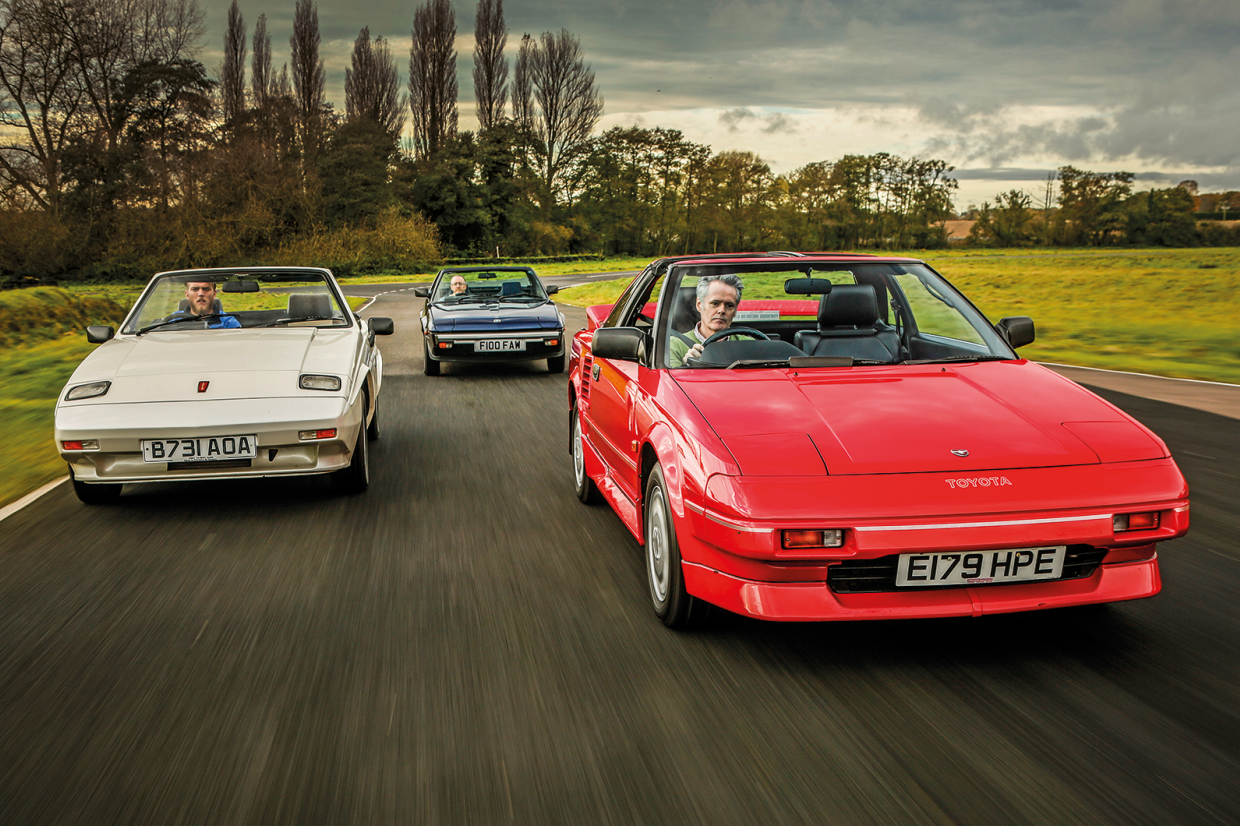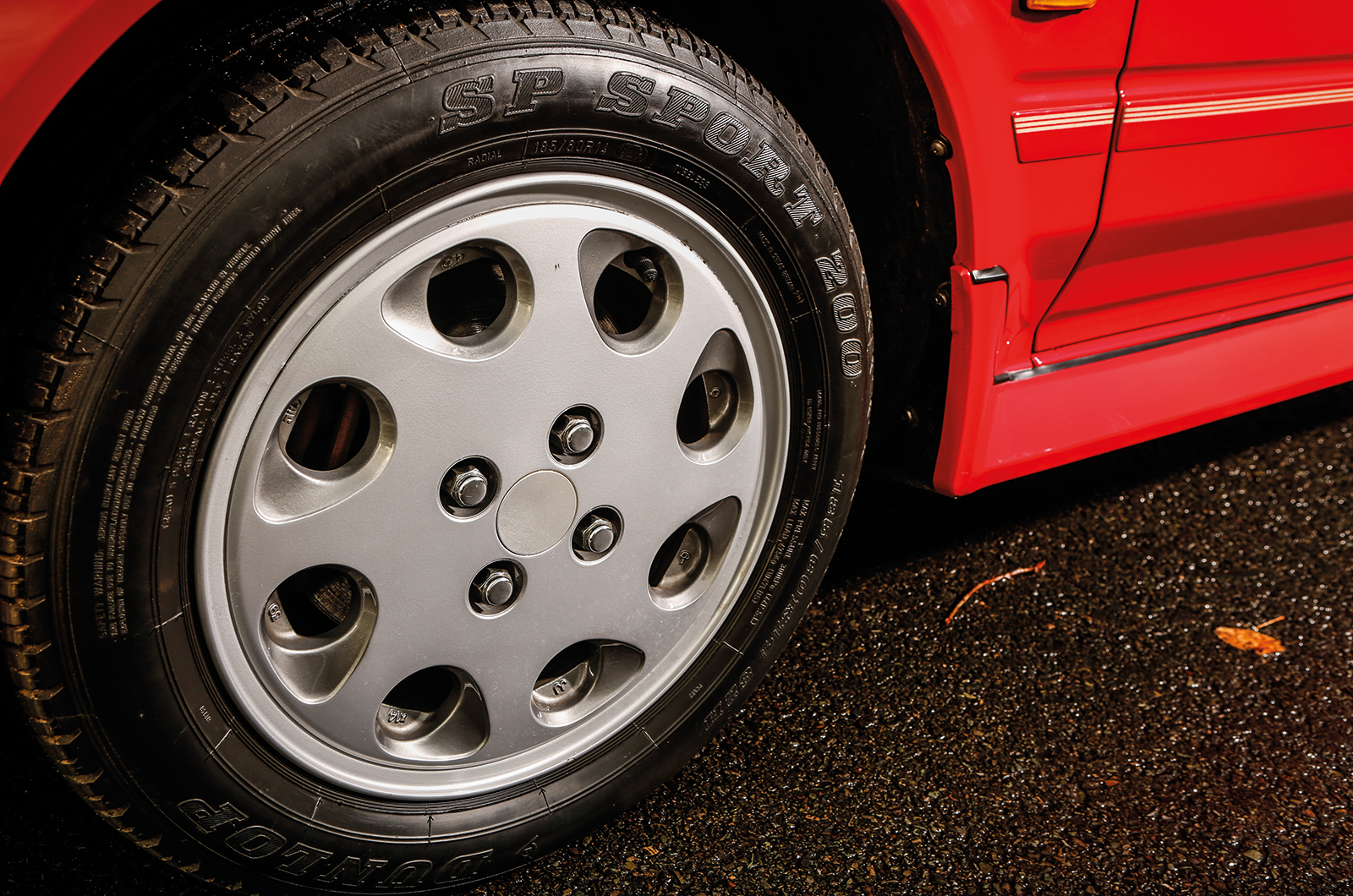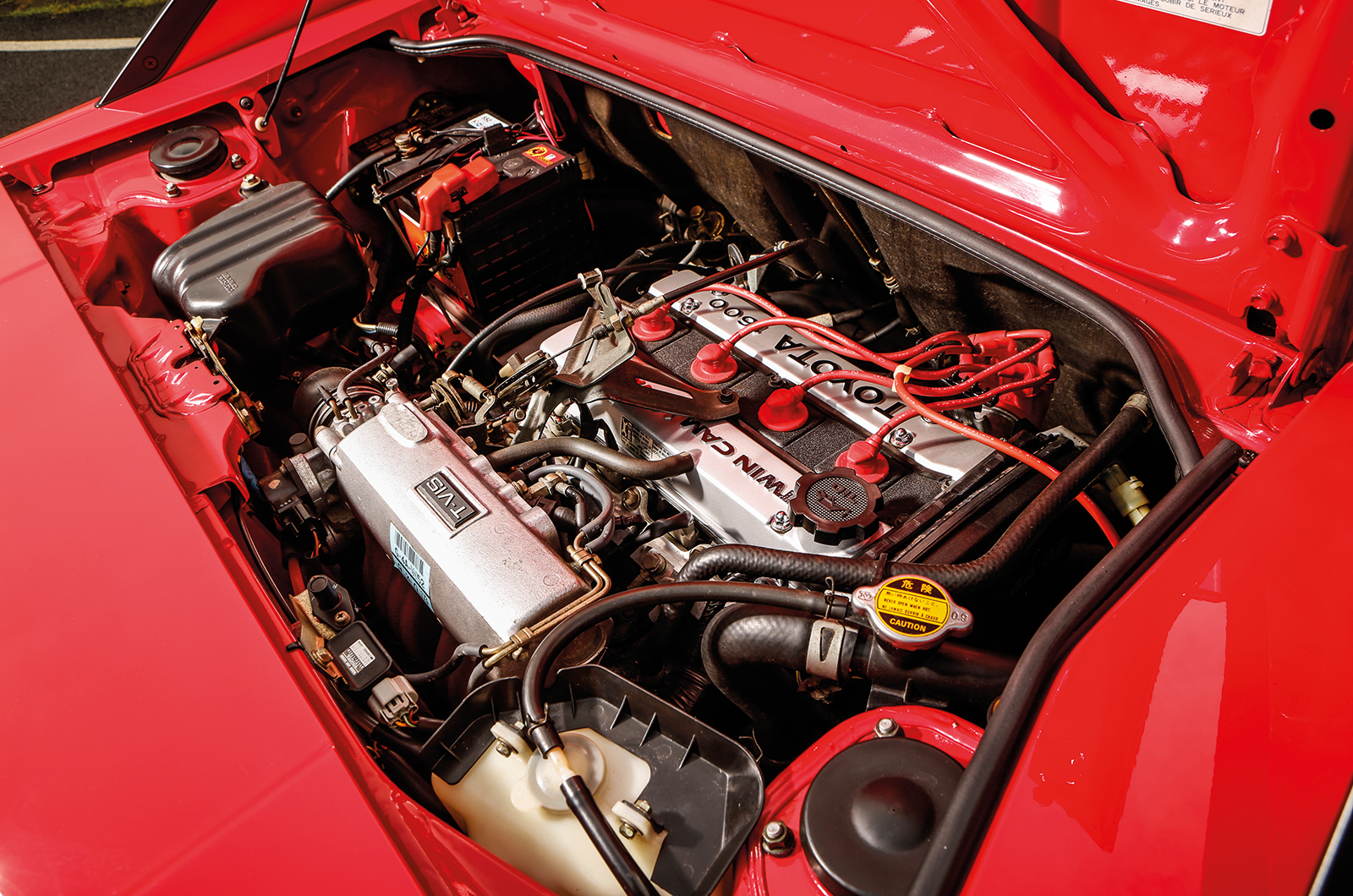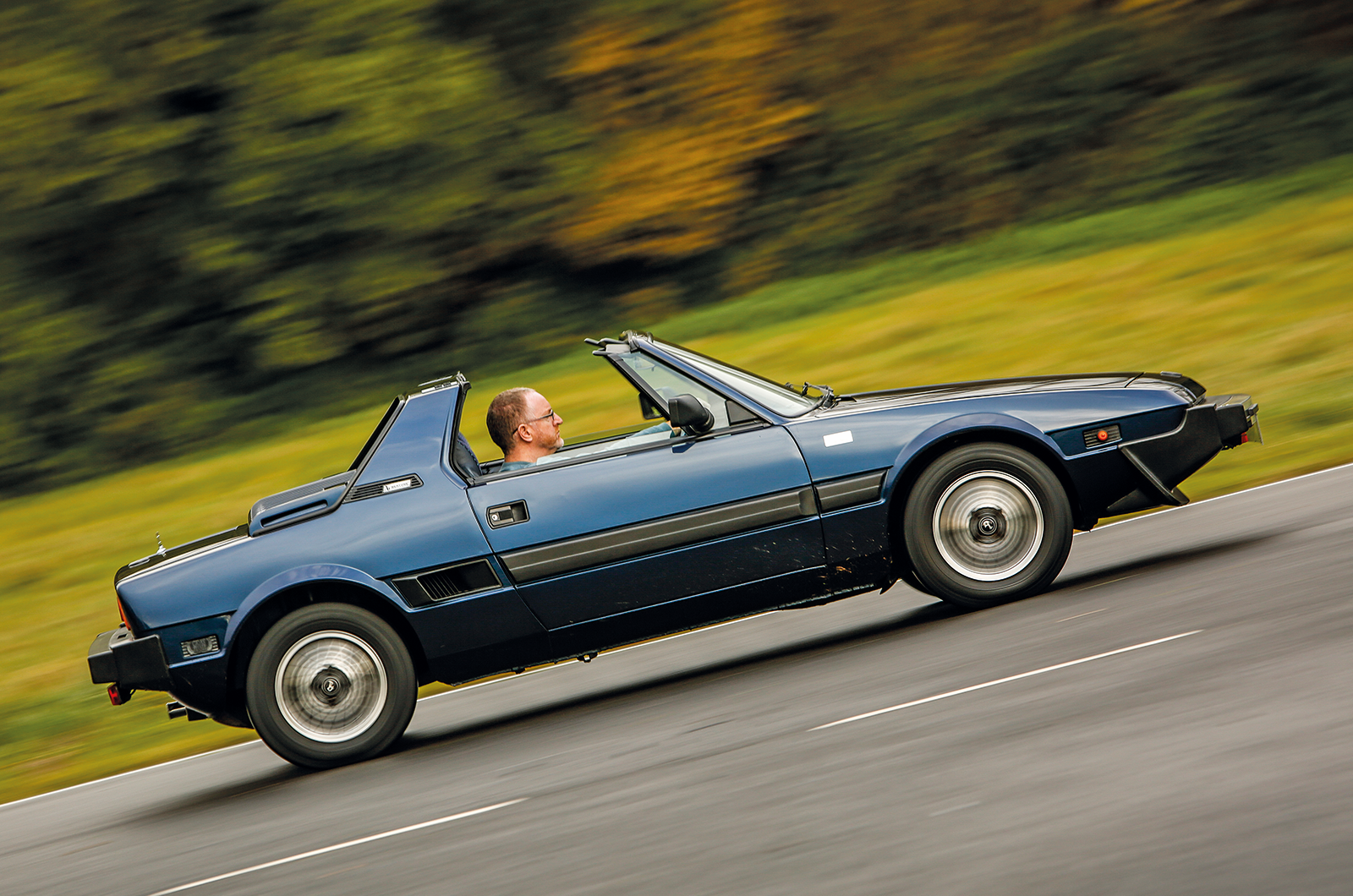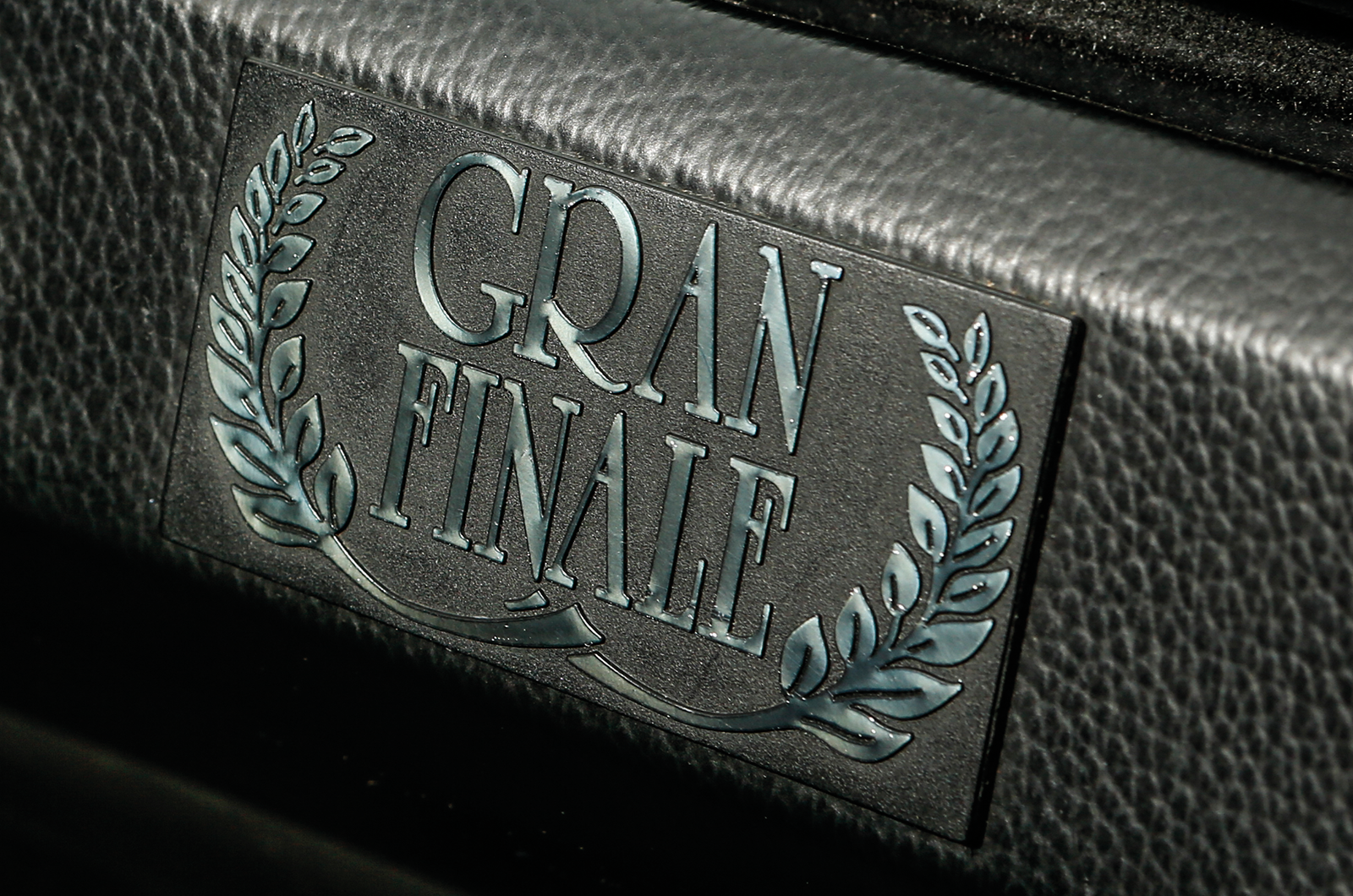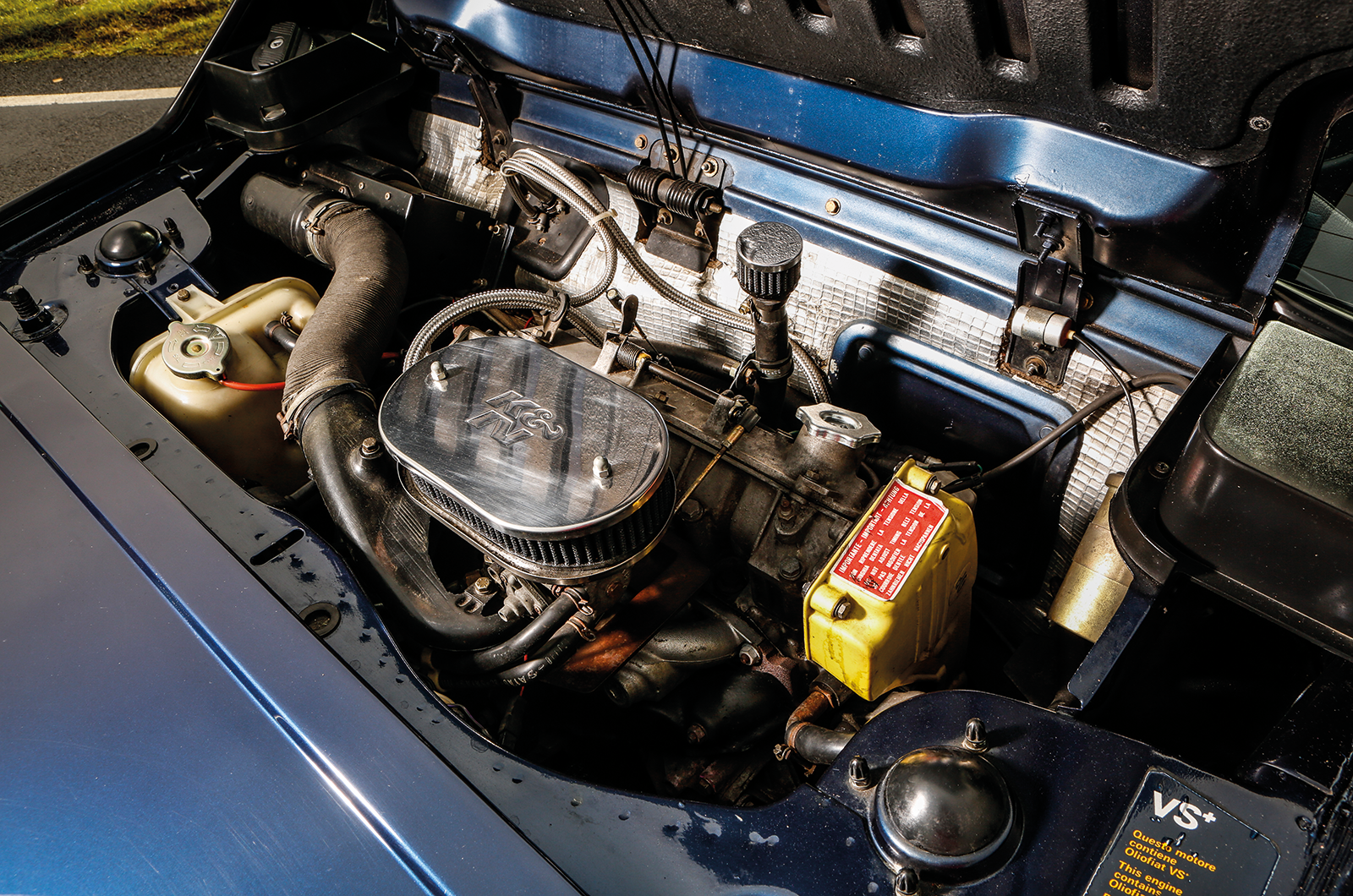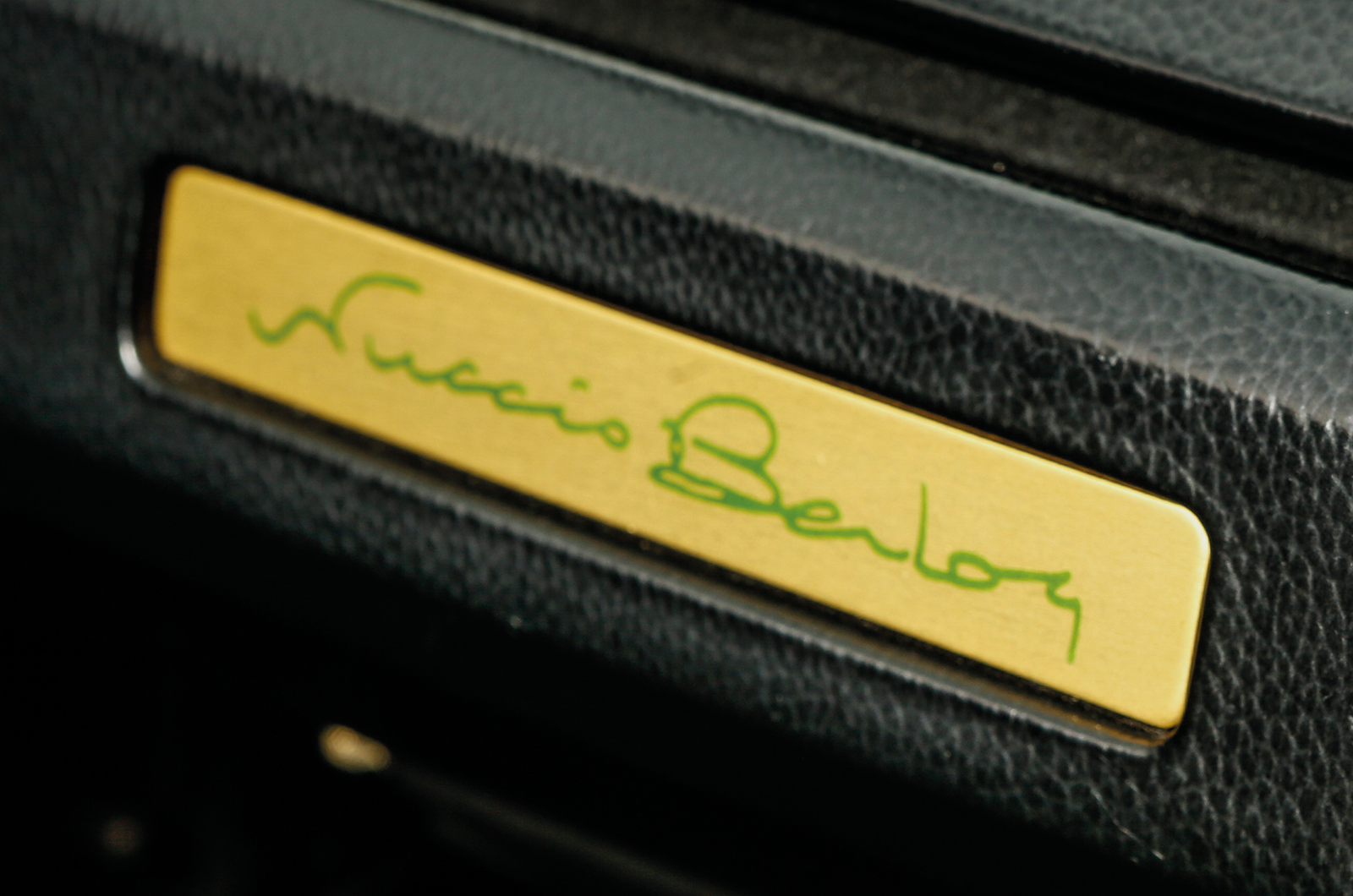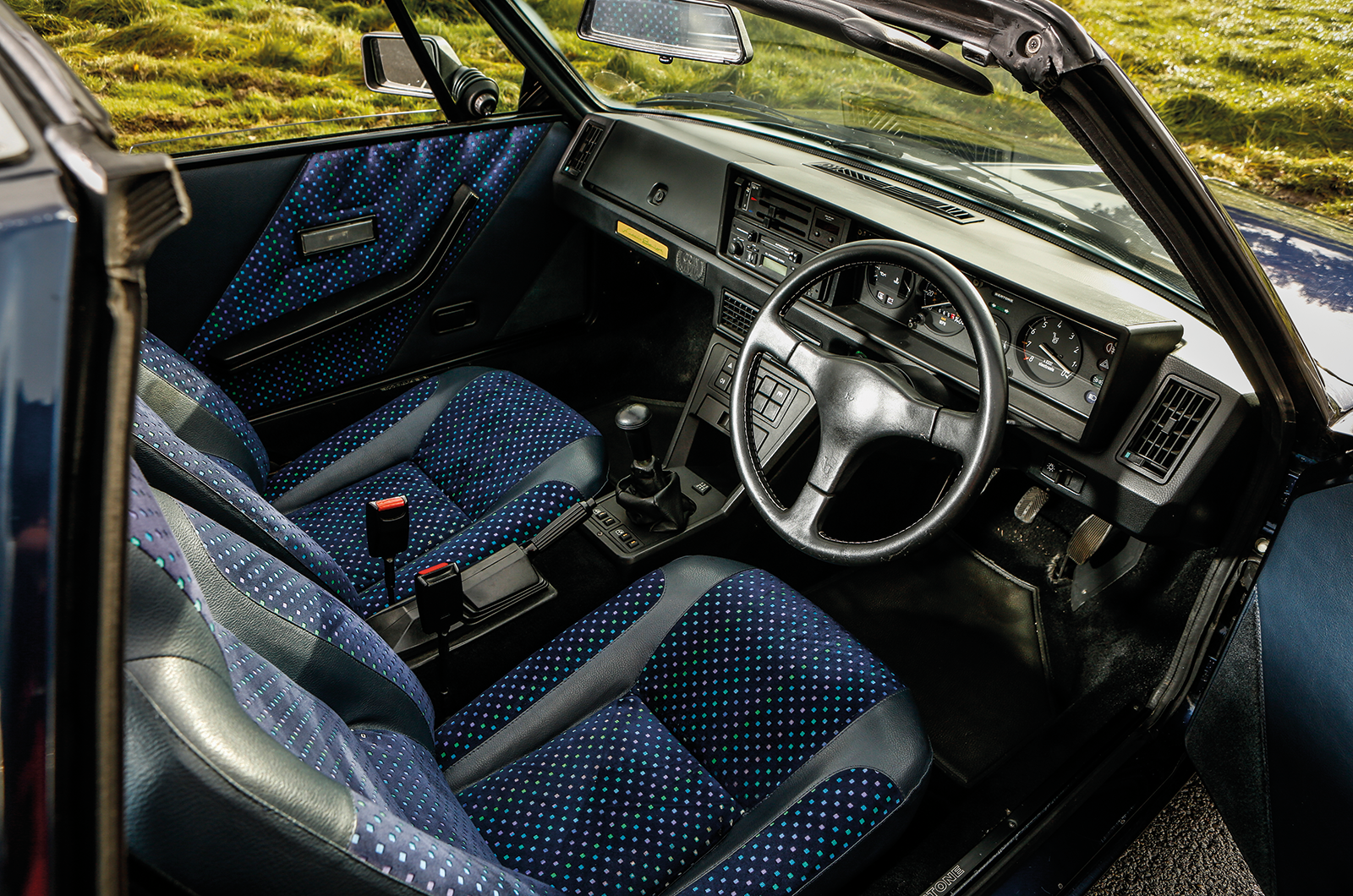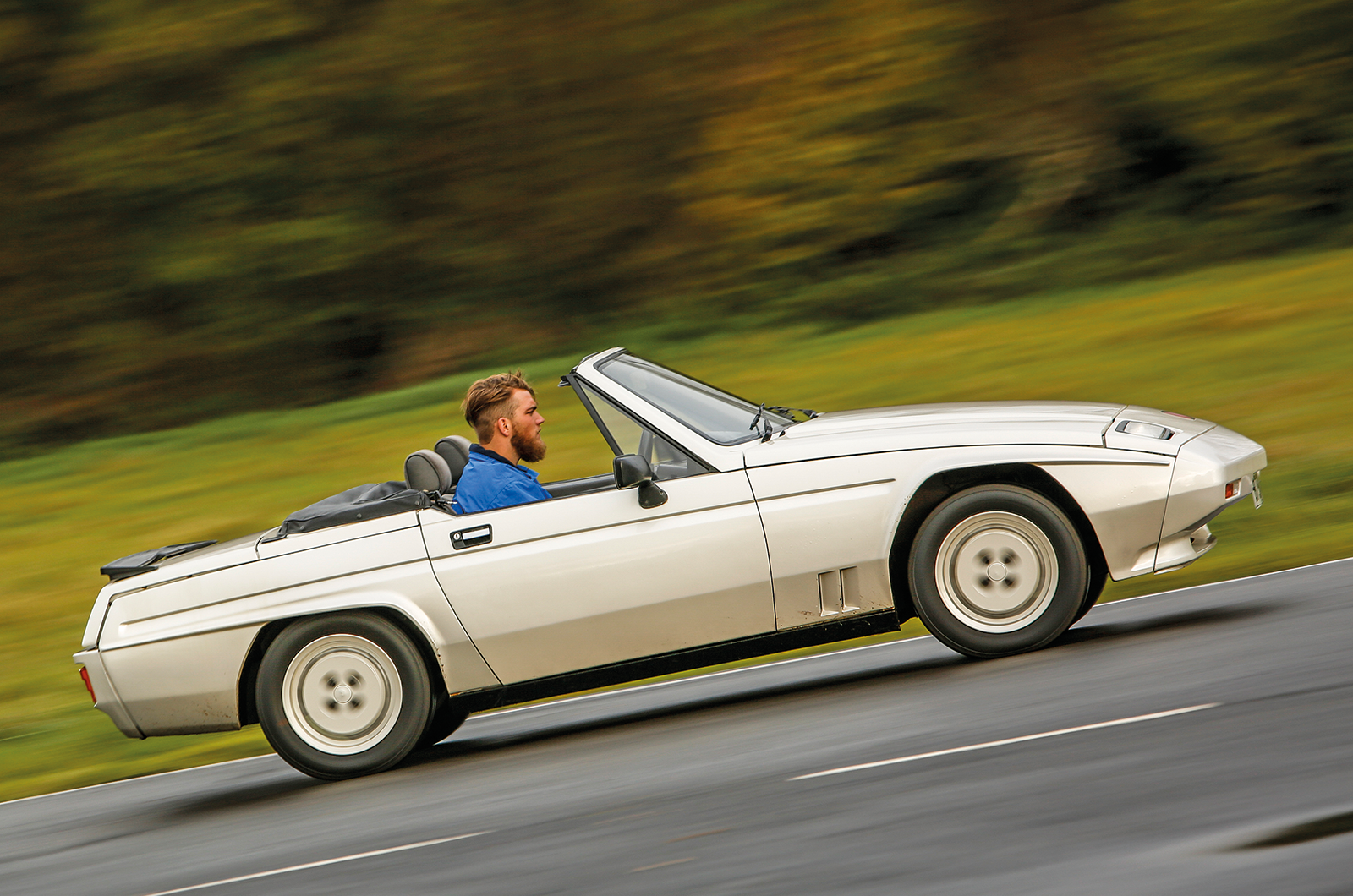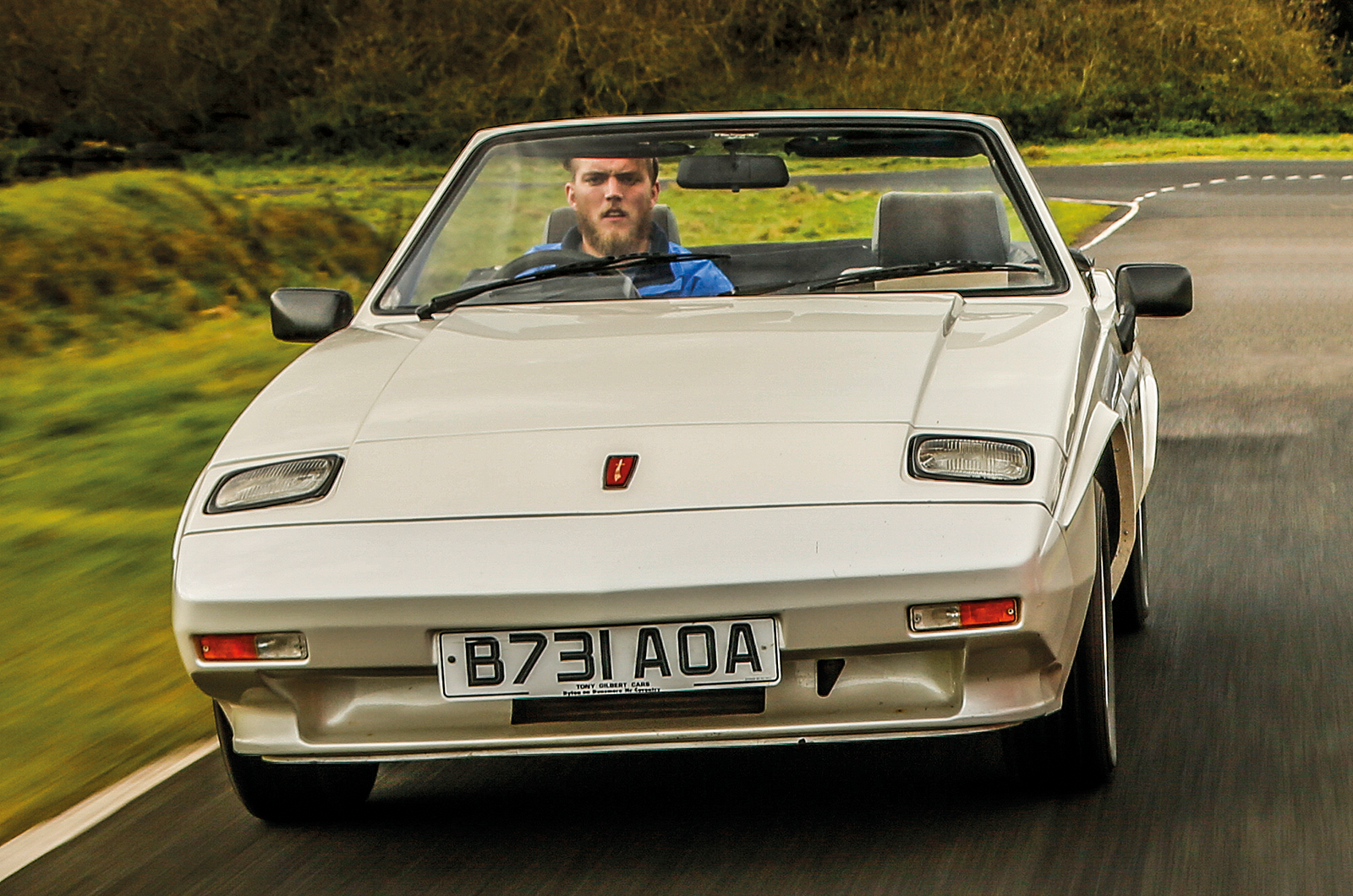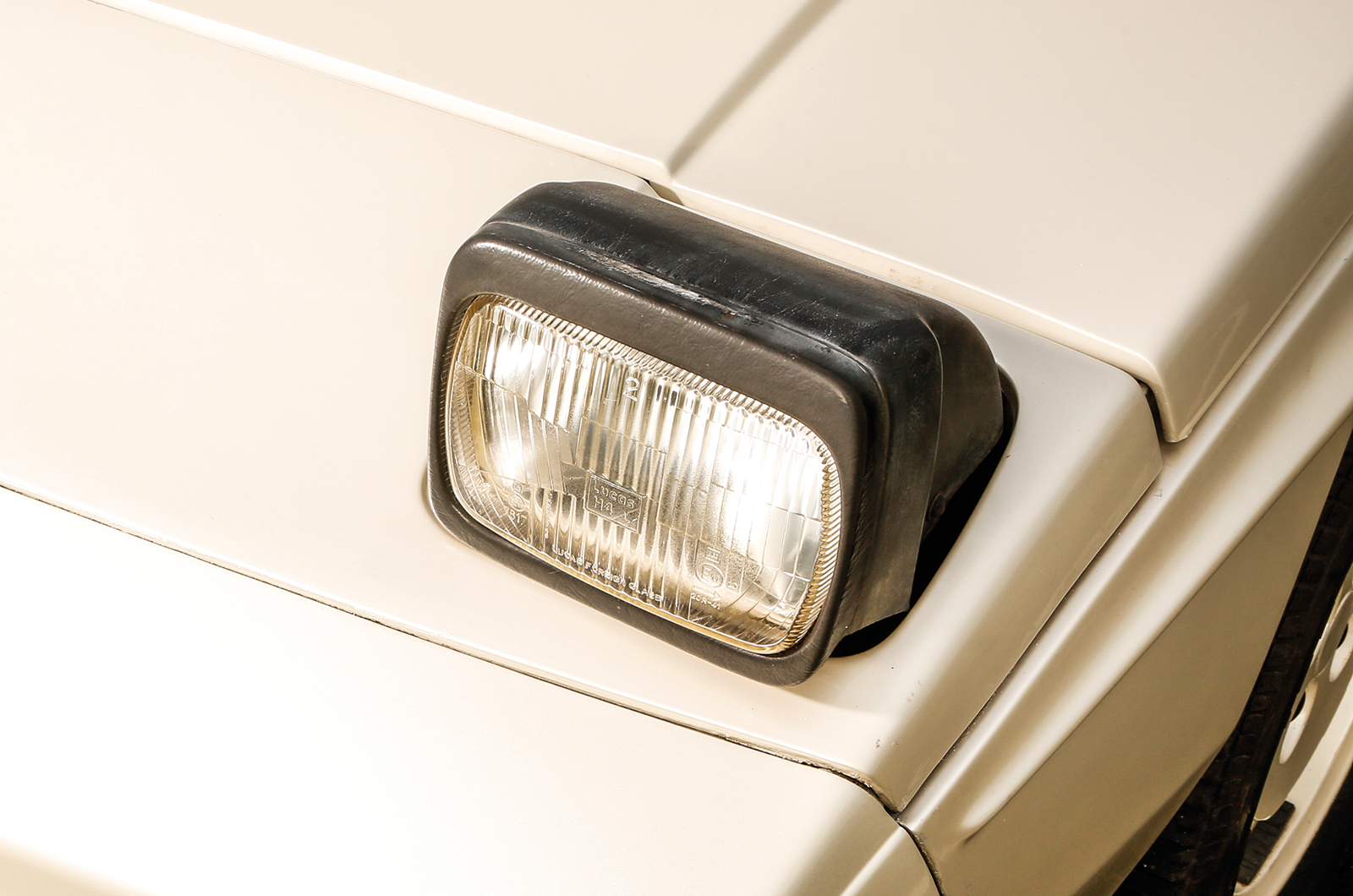In the context of our trio, the SS1 is not fast but you’ll understand the appeal if you’ve ever wagged a Spridget’s tail.
After the back-to-basics Reliant, the Toyota feels as if it’s from another era.
There’s a level of solidity and integrity to the Japanese car that the English machine (and, to a lesser extent, the Fiat X1/9) cannot approach, although in fairness the Toyota MR2 was much pricier when new.
There is an aura of the bespoke, too. It’s all very Star Wars, from the joystick-like gearlever to the ingenious switchgear or the eyeball vents that aim cooling air at your crotch.
You can picture an army of youthful imagineers coming up with this cabin.
There’s hardly a curve in the Reliant’s cabin, but the seats are really supportive
The Toyota is a bigger, taller car than the X1/9, yet for all the effort that’s gone into it the MR2 feels less airy than the Fiat, never mind the fully open Scimitar.
The top of the windscreen pillar sits much closer to your forelock than in the Italian, and with the roof panels removed the opening to the sky is far smaller.
Combine such details with the bulky ‘transmission tunnel’ that separates driver from passenger and, subjectively at least, the result is of a more claustrophobic cabin. Don’t let that put you off, though.
From the moment you turn the key the Toyota MR2 ensnares you.
Everything is exactly right: steering, suspension, brakes, engine and gearbox all feel perfectly at one. Everything is slick, well-oiled and delightfully balanced.
The Reliant Scimitar SS1’s pop-up headlights give a modern-day ‘Frogeye’ Sprite look
It makes a lovely noise as you gun it through the gears, turns in with aplomb and entertains like the best of them.
It’s hard to believe this is an ’80s design. Objectively, it is the best of the bunch, and by quite some margin.
But classic cars are not about objectivity. Each of these cars sought to tempt buyers away from hot hatchbacks, but they are three very different propositions.
Reliant’s SS1 is uncompromisingly old-fashioned and left-field, daring you to stand defiant of the crowd. In the run-up to our shoot, it was this machine that most intrigued me.
At the other end of the scale, the Toyota MR2 is far more sophisticated: deceptively easy-going when you’re feeling lazy and yet blessed with impressive pace and pin-sharp responses when you want to have fun.
Somewhere between the two lies the Fiat X1/9. In one sense, it lacks the polished brilliance of the Toyota, and on the other it can’t match the happy-go-lucky spirit of the traditionalist Reliant. Yet, somehow, it is the car that captivated me the most.
Whichever gets your vote, though, one thing is certain: you’ll be hard-pressed to have more fun for the money.
Images: Tony Baker
Thanks to: the X1/9 Owners’ Club, MR2 Mk1 Club, Reliant Sabre & Scimitar Owners’ Club
This was first in our March 2017 magazine; all information was correct at the date of original publication
Factfiles
Toyota MR2 Mk1
- Sold/number built 1984-’89/166,104
- Construction steel monocoque
- Engine iron-block, alloy-head 1587cc dohc 16-valve ‘four’, electronic fuel injection
- Max power 122bhp @ 6600rpm
- Max torque 105lb ft @ 5000rpm
- Transmission five-speed manual, driving rear wheels
- Suspension independent, at front by triangulated lower links rear transverse and trailing links; MacPherson struts, anti-roll bar f/r
- Steering rack and pinion
- Brakes discs all round, with servo
- Length 12ft 10½in (3924mm)
- Width 5ft 5½in (1664mm)
- Height 4ft 1¼in (1264mm)
- Wheelbase 7ft 1in (2320mm)
- Weight 2317lb (1051kg)
- 0-60mph 7.7 secs
- Top speed 124mph
- Mpg 29
- Price new £11,559
What to look for:
- Rust is the main enemy. It will be visible around the arches, notably the rear ones, but some rust traps are hidden behind side skirts, plastic liners and the front bumper covering
- Head gaskets can fail due to over-diluted antifreeze in the system, so look for a creamy sludge in the coolant cap which is the telltale
- Establish when the cambelt was last replaced – it should be at 60k miles or every five years. If it does fail, the design of the head means that the engine won’t be damaged
- At high mileages, fifth gear can jump out during acceleration/deceleration. A rebuild or a secondhand transmission will be needed
- T-bar roof seals have a tendency to leak, so feel around the cabin for damp
Fiat/Bertone X1/9
- Sold/number built 1972-’89/180,000
- Construction steel monocoque
- Engine iron-block, alloy-head 1498cc sohc ‘four’, twin-choke Weber carburettor
- Max power 85bhp @ 6000rpm
- Max torque 87lb ft @ 3200rpm
- Transmission five-speed manual, driving rear wheels
- Suspension independent all round, by MacPherson struts
- Steering rack and pinion
- Brakes discs all round
- Length 13ft ¼in (3969mm)
- Width 5ft 1¾in (1568mm)
- Height 3ft 10½in (1181mm)
- Wheelbase 7ft 2¾in (2203mm)
- Weight 2010lb (912kg)
- 0-60mph 10.8 secs
- Top speed 110mph
- Mpg 27
- Price new £8208
What to look for:
- Engines are bulletproof, so bodywork is the greatest consideration – and panels are virtually impossible to get hold of
- Rot in the windscreen surround can be terminal. You can weld in a replacement – if you can find a decent one – but it’s not for the faint-hearted!
- Triple-skinned rear suspension towers can rot from the inside. Check from within the engine bay and under the rear wheelarches, which can also rot virtually anywhere
- Sills need to be carefully inspected because of the monocoque design. Look for corrosion around door rubbers and seatbelt mounts
- Door alignment will indicate the trueness of the shell. They can drop slightly, but if they don’t shut nicely, ask yourself why
Reliant Scimitar SS1
- Sold/number built 1984-’90/1507
- Construction fabricated steel chassis, plastic/glassfibre body
- Engine iron-block, alloy-head 1296cc sohc ‘four’, Weber twin-choke carburettor
- Max power 69bhp @ 6000rpm
- Max torque 74lb ft @ 3500rpm
- Transmission four-speed manual, driving rear wheels
- Suspension independent, at front by double wishbones rear semi-trailing arms; coil springs, telescopic dampers f/r
- Steering rack and pinion
- Brakes discs front, drums rear, with servo
- Length 12ft 9in (3886mm)
- Width 5ft 2¼in (1581mm)
- Height 4ft ¾in (1238mm)
- Wheelbase 7ft (2134mm)
- Weight 1850lb (839kg)
- 0-60mph 12.7 secs
- Top speed 100mph
- Mpg 35
- Price new £7495
What to look for:
- Chassis corrosion on non-galvanised cars: side rails, jacking points, B-post base and rear trailing-arm mounting tube. All turbo models and later CVH cars were galvanised
- Carefully inspect front wishbones for cracks: later ones were strengthened, and early ones should be modified
- Confirm that the CVH engine has had regular oil changes by looking inside the rocker cover
- Cracked differential mounts on early non-galvanised cars. It’s not a common fault, but listen for a clunk when pulling away or braking. The SS uses an unstressed Ford 7in diff and unequal-length driveshafts with CVs
- Listen for exhaust blowing on turbo models, because it’s awkward to remove
Enjoy more of the world’s best classic car content every month when you subscribe to C&SC – get our latest deals here
READ MORE
Fiat X1/9 at 50: celebrating Italy’s miniature supercar
Reliant Scimitar GTE: Tom Karen’s landmark sports estate
Buyer’s guide: Toyota MR2 Mk2
Malcolm Thorne
Malcolm Thorne is a contributor to – and former Deputy Editor of – Classic & Sports Car
